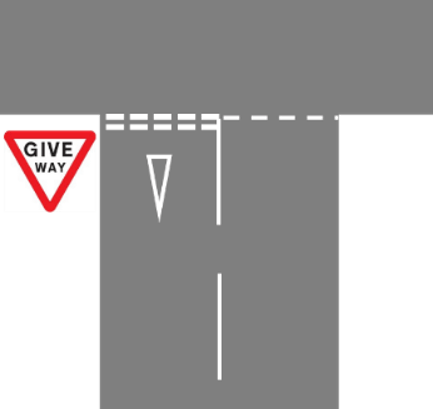
Give Way sign and road Markings.
You MUST give way to traffic on the major road (the upright sign or both the sign and the triangle on the road might not be used at junctions where there is relatively little traffic)
Get to learn them, understand their true meaning and you'll be a much safer driver throughout.
They will also allow you to plan ahead for changes in circumstances that are coming up.
Link any road marking with potential road signs nearby and you'll have a greater chance of staying safe.
Road marking are a language of their own and understanding them is a huge benefit.
As a rule....... THE MORE PAINT THE BIGGER THE DANGER!
Just for those who like to know a little more about things.
Road markings in the UK were first introduced in 1918.
In 1920 the rise of painted lines on UK roads grew dramatically but not until 1926 that official guidelines
of where and how white lines on roads should be used were introduced. This was carried out by the Ministry of Transport.
As the years went by, utilising white lines to keep traffic in respective lanes, highlighting boundaries of carriageways, entrances to side roads and lay-bys grew, along with the introduction to cats eyes.
In the 1950's yellow lines appeared to create restrictions on parking, waiting, loading and unloading.
In 1959 double solid white lines were used to highlight where overtaking was not permitted.
1960s saw the introduction of Box junctions.
How the language of road markings works.
As mentioned above the more paint the more danger.
So let's try and build on that and what to expect.
A two way road on a very quaint quiet village may not have any white lines painted to separate the two directions of travel.
Why?
Because the level of traffic using it is very minimal, and possibly because there may have never been a road traffic incident recorded on it.
If there have been no reported incidents, then it's usually considered a safe area and would be a waste of public finances to paint and then keep repainted year on year.
If certain parts of this quaint are had possibly a tricky junction, then it is highly likely that the areas of higher risk would be painted to highlight that risk, such as Stop lines, and Give Way areas.
Any lines painted on a road's surface has the intention of supplying you information.
It is painted to let you know something.
If you spend time learning what that something is, it will allow you to make an informed decision about how you continue with your journey.
White longitudinal markings that travel along the road inform drivers of approaching situations such as a hazard ahead, no overtaking, move to the left etc.
Lines that cross the road (transverse) are giving you instructions such as Give way , Stop, Keep clear etc.
There are three main types of broken white line in the middle of the road travelling in the direction of flow.
Depending on the length of this line will state the intensity of danger.
Typically a broken white line ( longer than the lane divider markings) marks the centre of the road, when the line becomes longer with a shorter gap in between the lines then the level of danger (hazard) is close. This may be a bend, hidden dip, brow of a hill, junction/s coming up. it's notifying you to be cautious.
usually an increased white line, especially on rural roads may also be accompanied by the word SLOW painted on the road. Along with the word SLOW, there may also be an accompanying sign notifying you of what the potential hazard may be.
Short broken white lines signify lane dividers and are used on wide carriageways to highlight each lane. You should drive in the centre of your lane and only cross them when safe to do so when you are changing lanes to overtake or take a turning.
Solid white lines on your side of the road signify that you are not permitted to overtake unless passing a stationary vehicle or passing something that is travelling at less than 10mph.
You may straddle or cross the line if you are overtaking based on the above circumstance or if turning into a side road or premises.
Twin Solid white lines implies that no direction can overtake unless the rules as stated above are in place.
Areas with white diagonal stripes or chevrons are to keep traffic lanes apart or to protect any traffic that is turning right.
If the area has a border of a broken white line, you shouldn't enter the area unless it is necessary and you can see clearly that it is safe for you to carry out the manoeuvre.
N.B: If the area has diagonal stripes and is bordered with solid white lines you should not go into it.
If the area is marked by chevrons, you must not enter it (unless in an emergency).

You MUST give way to traffic on the major road (the upright sign or both the sign and the triangle on the road might not be used at junctions where there is relatively little traffic)
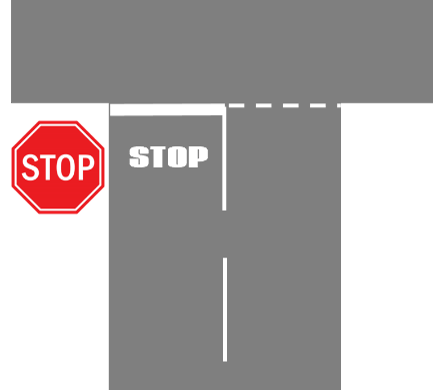
You MUST stop before crossing the transverse line on the road and ensure the way is clear before entering the major road.
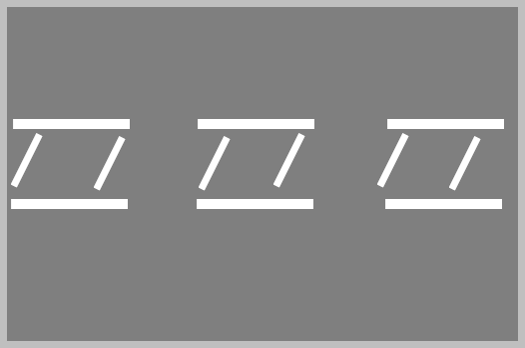
Bounded by broken lines may be used in the centre of the road to separate opposing flows of traffic. They are often provided at junctions to protect traffic turning right. They may also be used on the approach to a central traffic island or the start of a dual carriageway,. Hatched markings with a single broken boundary line may be used at the edge of the road or next to the central reservation of a dual carriageway; the diagonal lines always slope towards the direction of travel. You should not enter any hatched area bounded by a broken line unless it is safe to do so.
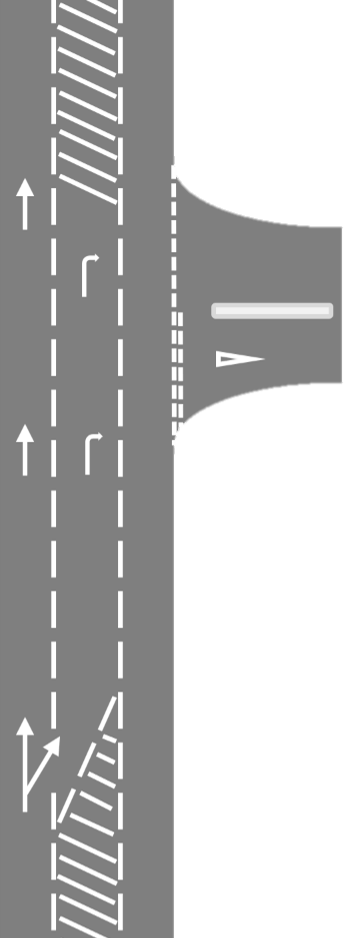
Hatched areas to protect turning traffic. Drivers should not enter unless safe to do so.
Diverge arrow indicating an exit slip road or the start of a lane for turning right. (may be reversed)
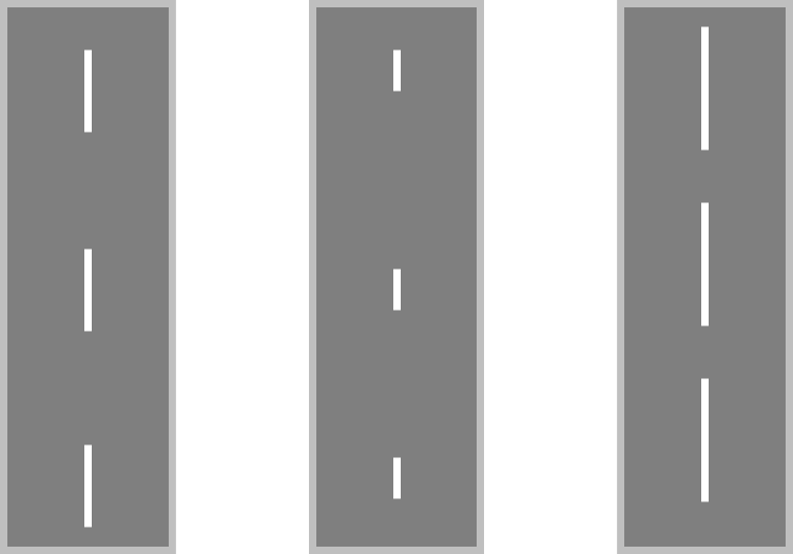
Left image.
Centre line on a single carriageway road
Centre image.
Lane line separating traffic travelling in the same direction (single or dual carriageway road)
Right image.
Hazard warning line (replaces centre line or a lane line). An upright sign may indicate the nature of the hazard, such as a bend. The marking is also used on the approach to a junction.
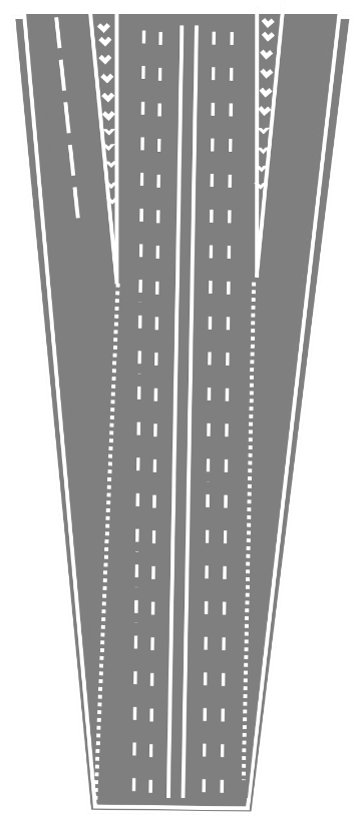
Do not cross chevron markings with a continuous boundary line.
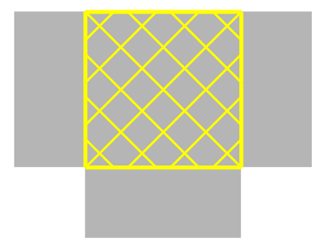
Where stationary traffic would be likely to block a junction, a yellow box may be marked on the road, covering all or part of the junction. You must not enter the box if your exit is not clear. If turning right at the junction, you may enter the box (behind other right-turning vehicles, if any) to wait for a gap in the oncoming traffic, but only if the right-turn exit is clear.
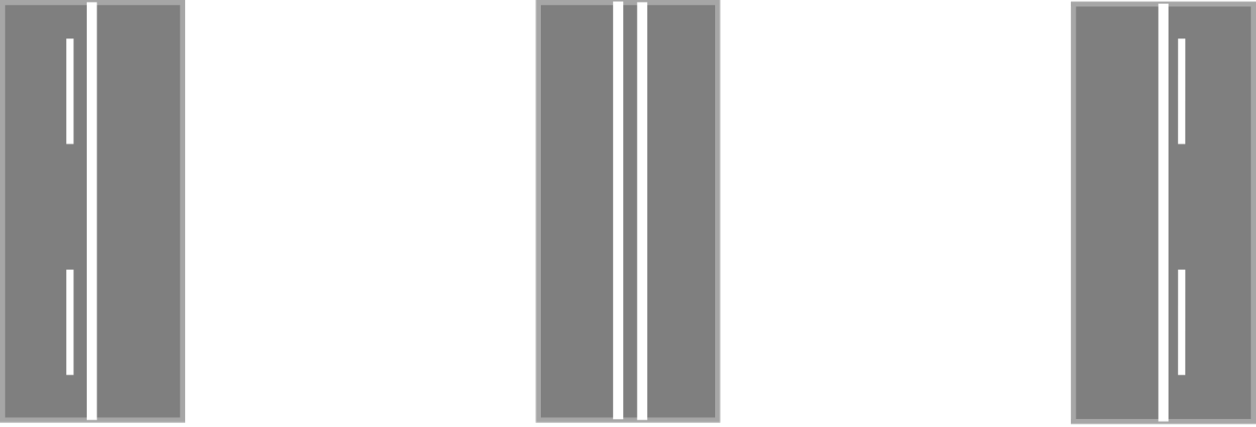
Left image.
Oncoming traffic cannot overtake. (see exceptions rules)
Centre image.
No one can overtake (see exceptions rules)
Right image.
Oncoming traffic may overtake if safe to do so.
Exceptions rules. These lines are used to prevent overtaking where visibility is restricted, and to separate opposing traffic flows on steep hills with climbing lanes. Double continuous lines are also sometimes used on other single carriageway roads that have two lanes in at least one direction. Viewed in the direction of travel, if the line closest to you is continuous, you MUST NOT cross or straddle it (except to turn into or out of a side road or property, avoid a stationary vehicle blocking the lane, or overtake a pedal cycle, horse or road works vehicle moving at not more than 10mph). Where the lane closest to you is broken, you may cross the lines to overtake if it is safe to do so. Stopping is prohibited on any length of road that has double solid white lines, even if the line on that side of the road is broken. The exceptions are stopping to pick up or set down passengers, or to load or unload. In these circumstances, you should park off the main carriageway wherever possible.
Some double continuous white lines have narrow areas of hatched lines within them or a wider area of hatching to the side. You must not cross a continuous white line to enter a hatched area.
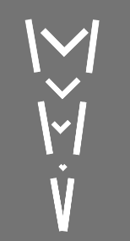
Part of the carriageway where traffic passes in the same direction on either side of the chevron marking. Vehicles should not enter the area unless safe to do so. This marking is likely to be found in one-way streets with central islands and where an exit lane leaves a junction.
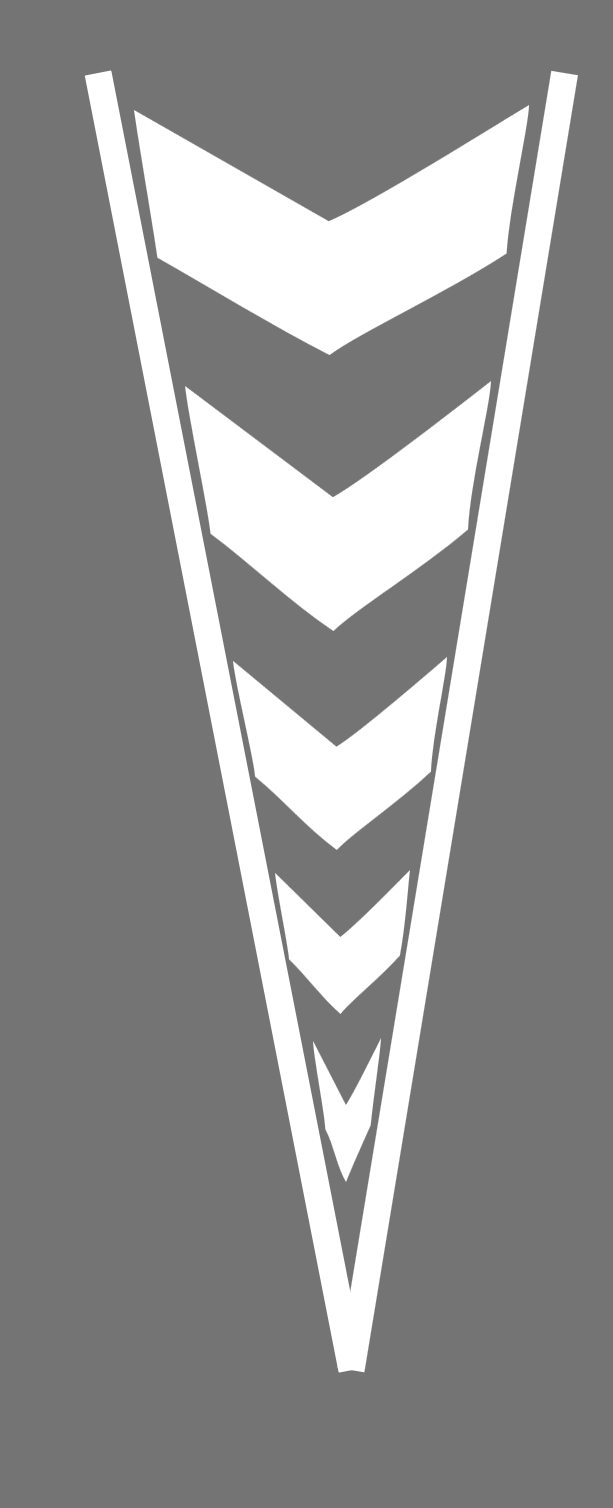
Part of the carriageway where traffic passes in the same direction on either side of the chevron marking. The continuous boundary line means that vehicles must not enter the area except in an emergency. This marking is used where slip roads leave and join motorways and many dual carriageway roads. It is also used for segregated left-turn lanes at roundabouts.
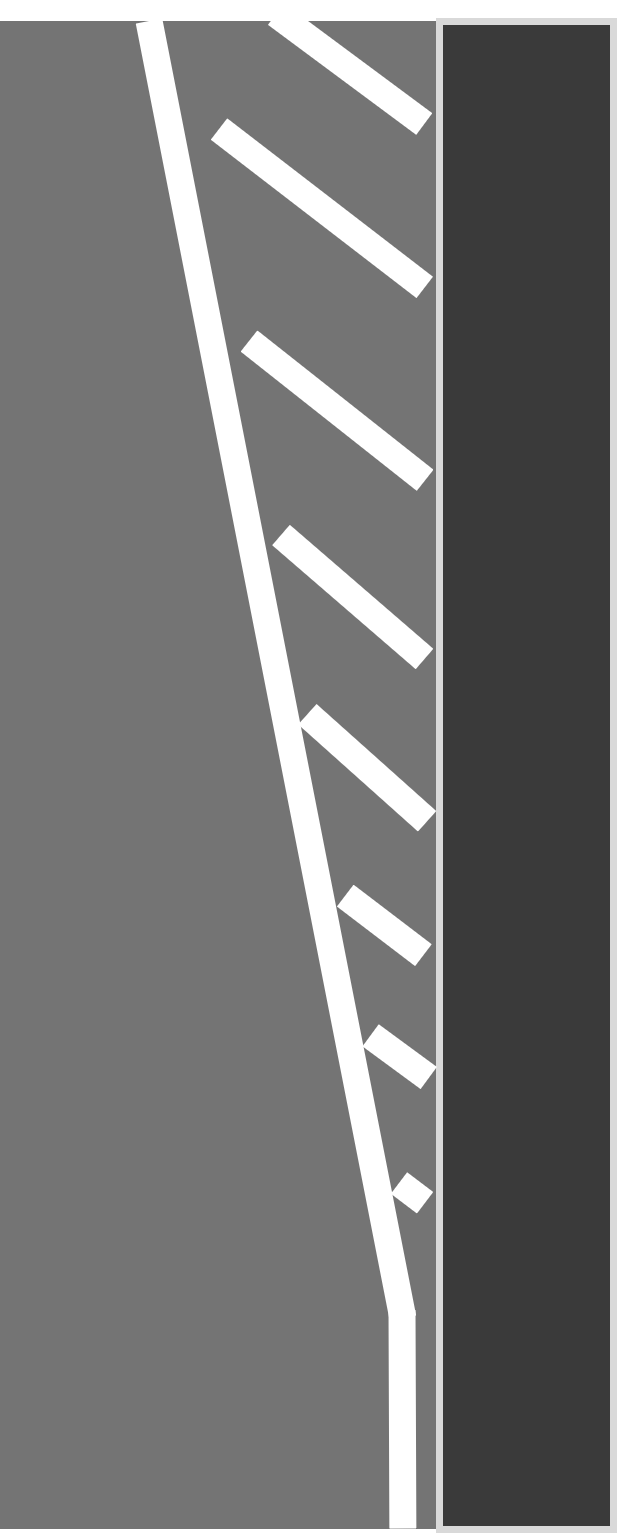
or area not available to traffic. Vehicles must not cross the continuous white line except in an emergency. Used on the right0hand side of a motorway, dual carriageway road or slip road.
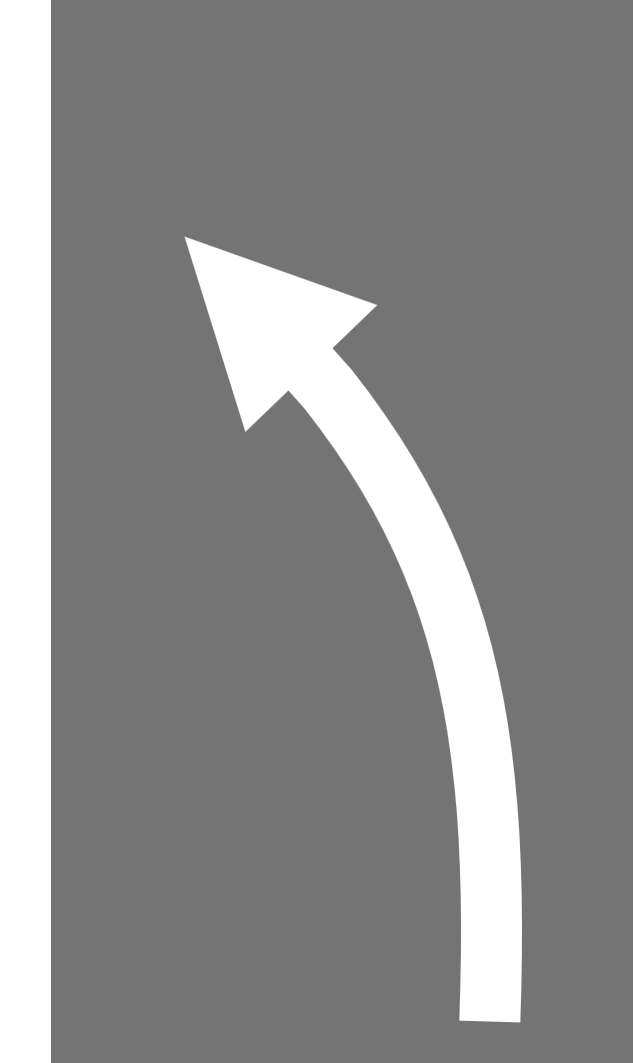
Arrow indicating the direction in which to pass hatched markings and double white lines, or the route that high vehicles should take under a low bridge (may be reversed).